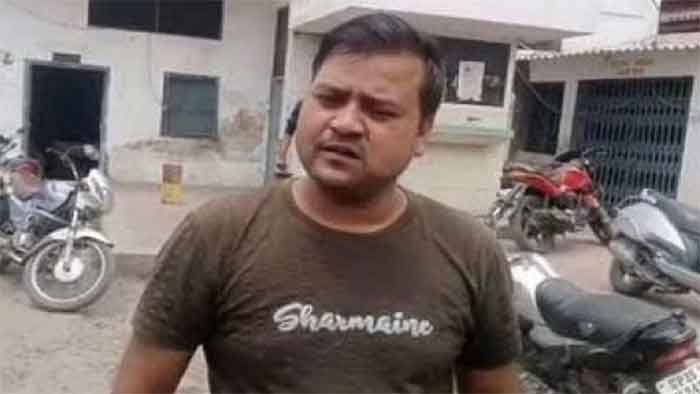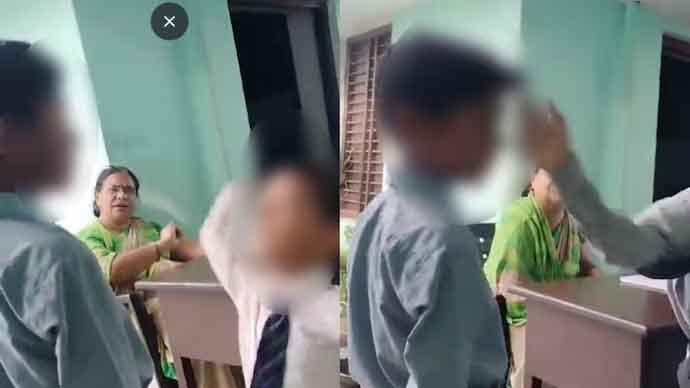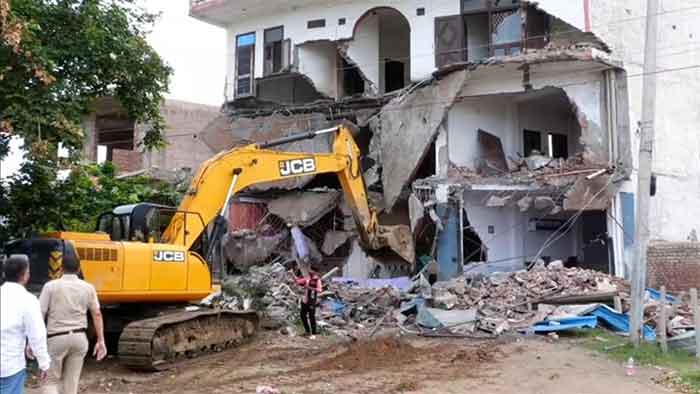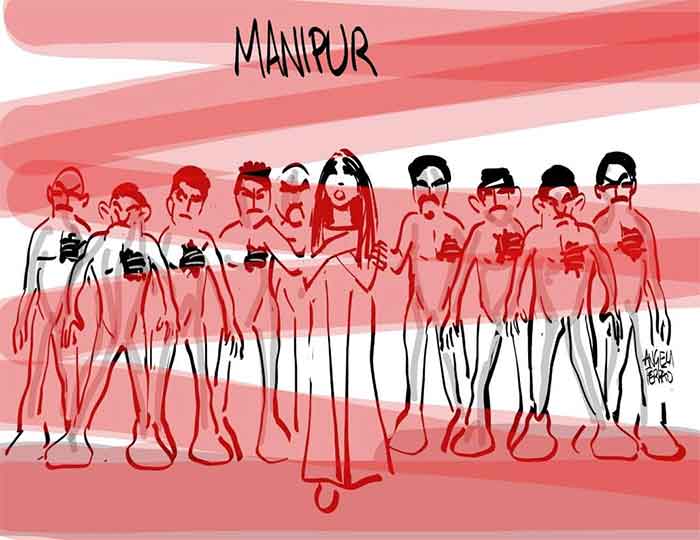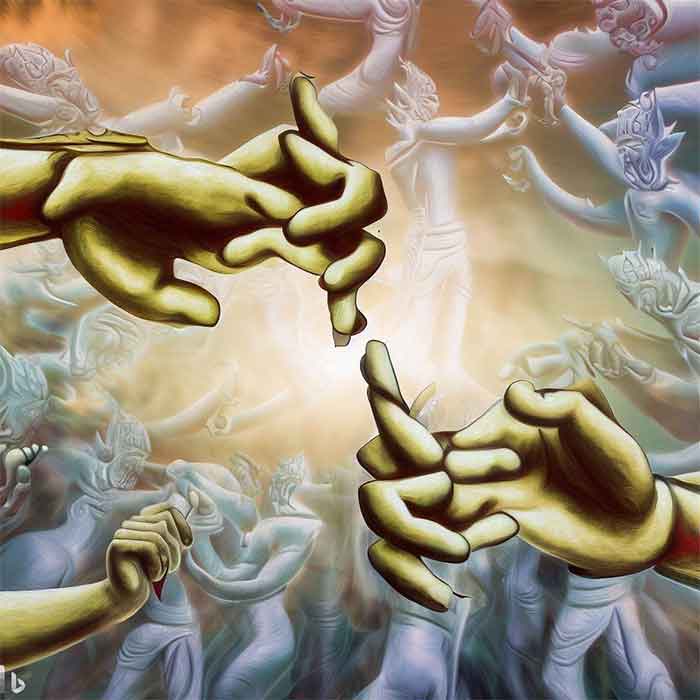
The ongoing violence in Nuh and Gurugram, Haryana which reportedly led to the killing of five people at the time this article was written, including a masjid Imam, as well as the destruction of a mosque and shops is only the latest in a long list of similar “communal incidents” and lynchings across India. In another simultaneous act of gut-wrenching killing by ethnic profiling of three Muslim men including a tribal superior officer by an RPF constable Chetan Kumar in a moving train, is emotionally very distressing and unsettling. Similarly, the killings, rapes, and displacement of another tribal Christian minority community taking place in Manipur for months bear to the testimony that minorities are neither safe in their houses nor in public places anymore. However, to characterize such repeated bouts of targeted violence against Muslims as merely “communal riots” is a gross misrepresentation. It downplays and normalizes what are essentially acts of a slow and systematic ethnic cleansing aimed at intimidating and dispossessing the Muslim minority community.
Paul Brass, in his seminal book ‘The Production of Hindu-Muslim Violence in Contemporary India,’ introduced a framework called the “institutionalized riot system” to comprehensively understand Hindu-Muslim violence in contemporary India. This framework provides a functional explanation of how violence is deliberately manufactured by powerful actors, notably to consolidate voters along religious lines during periods of intense political mobilization or electoral competition. However, Brass’ framework, primarily rooted in data up to 2002, does not fully encapsulate the drastic transformation of India into a Hindu majoritarian state in recent years. Under the current regime, violence against Muslims is not an aberration happening at the time of election, it is an essential governing tool.
With the BJP and Cahoots espousing openly divisive rhetorics and implementing discriminatory policies, anti-Muslim hatred and violence has dangerously become normalized in India. Policies such as the impending Citizenship Amendment Act, the National Population Registry (NPR), and the National Registry of Citizens (NRC) overtly discriminate against the Muslim community. State institutions like the police not only enable riots through inaction but are often complicit in direct violence against Muslims as found in several reports and academic examinations. The electoral successes the BJP has achieved after riots prove that such violence pays political dividends for them. Meanwhile, the expanding footprint of Hindu nationalist groups like Bajrang Dal and VHP further facilitates violence and intimidation against Muslims across India. The combination of discriminatory laws, state complicity, electoral incentives for violence, and mobilization by extremist groups has created an environment where anti-Muslim hatred and violence has become systematically enabled and embedded in society rather than an aberration.
Across India, Modi’s era has seen a manifold increase in violent attacks on Muslims by cow vigilantes, allegations of Muslim men “seducing” Hindu women to convert them, frequent calls and attempts to economically and culturally obliterate Muslim identity, and the ruthless crushing of Muslim protests against discrimination. Police investigations and court trials against Hindu perpetrators are deliberately lax, while Muslims live under constant threat of being penalized as “anti-national” on flimsy pretexts.
This institutional capture and climate of violence is forcing Muslims to recede from the public sphere. With their lives, livelihoods and religious spaces under literal attack, accompanied by a sense of political disenfranchisement, Muslims face conditions seemingly designed to exclude, subjugate and erase them. The ultimate goal is to render Muslims politically irrelevant and culturally invisible, reducing them to second class citizens afraid of fully participating in public life. It is the violent enforcement of a Hindu supremacist ideology that dreams of finally “solving” the Muslim problem created by Partition – by making them vanish from the national mainstream.
When a minority group is systematically targeted through violent dispossession of property, restrictions on cultural expression, physical atrocities, and symbolic markers of inferiority and exclusion, it constitutes a slow and systematic ethnic cleansing regardless of absolute fatality figures. Death tolls should not blind us to the structural violence at play.
While Brass’ framework of an institutionalized riot system provides valuable insights into the deliberate production of manufacturing of communal violence by riot agents for political ends, it has limitations in fully explaining the endemic and pervasive nature of present-day violence against Muslims in India. Contemporary anti-Muslim violence is not confined solely to riot-prone areas or election periods, but has become ubiquitous even in remote villages, small towns, and public spaces at any given moment. The strategic lynchings of Muslims captured on camera and made viral during or after the acts in many cases, the daily anti-Muslim rhetoric permeating mainstream national media, the proliferation of hate speeches and genocidal calls with minimal condemnation from secular opposition parties due to fear of majority Hindu reprisal, and the lack of judicial redress all point to a normalization of violence that cannot be sufficiently elucidated through the institutionalized riot system framework alone. While electoral motivations are relevant, the current climate suggests a more complex mix of underlying ideological, social and political factors at play in the embedded majoritarian hatred against Muslims. Brass’ model therefore requires augmentation to account for the wider socio-political processes, power dynamics and majoritarian nationalist ideologies legitimizing endemic anti-Muslim violence in contemporary India.
The ongoing violence must be seen not as an aberrant clash but as part of this endless chain of violence enabled by state institutions, aimed at challenging the very existence of the Muslim community in the national imagination. Each attack pushes the boundaries of what levels of violence can be normalized. The friction and scrap wounds accumulate until the victims are eliminated or submit totally.
We must stop using the misleading label of “communal riots” which embedded in the analytical framework of the concept ‘the institutionalized riot system, and call out the elephant in the room – the slow and systematic ethnic cleansing of Muslims from the body politic. Our constitution guarantees minority rights as fundamental, non-negotiable principles. Allowing their systemic violation erodes India’s own survival as an inclusive democracy. The time for diplomatic silences is over. If we all concerned citizens do not stand up when one group is existentially persecuted, there will be no one left to stand up for us when our own freedoms are extinguished.
Abdul Moid is a PhD Scholar at Maulana Azad National Urdu University in the Department of Political Science. His area of research interest is in the field of Gender,Identity politics and and Minority rights. He holds a postgraduate degree in Political Science from the University of Hyderabad and a Bachelor of Arts (Honors) in Political Science from Banaras Hindu University. Prior to his university education, Abdul Moid received his early education in the Madrasa system.

